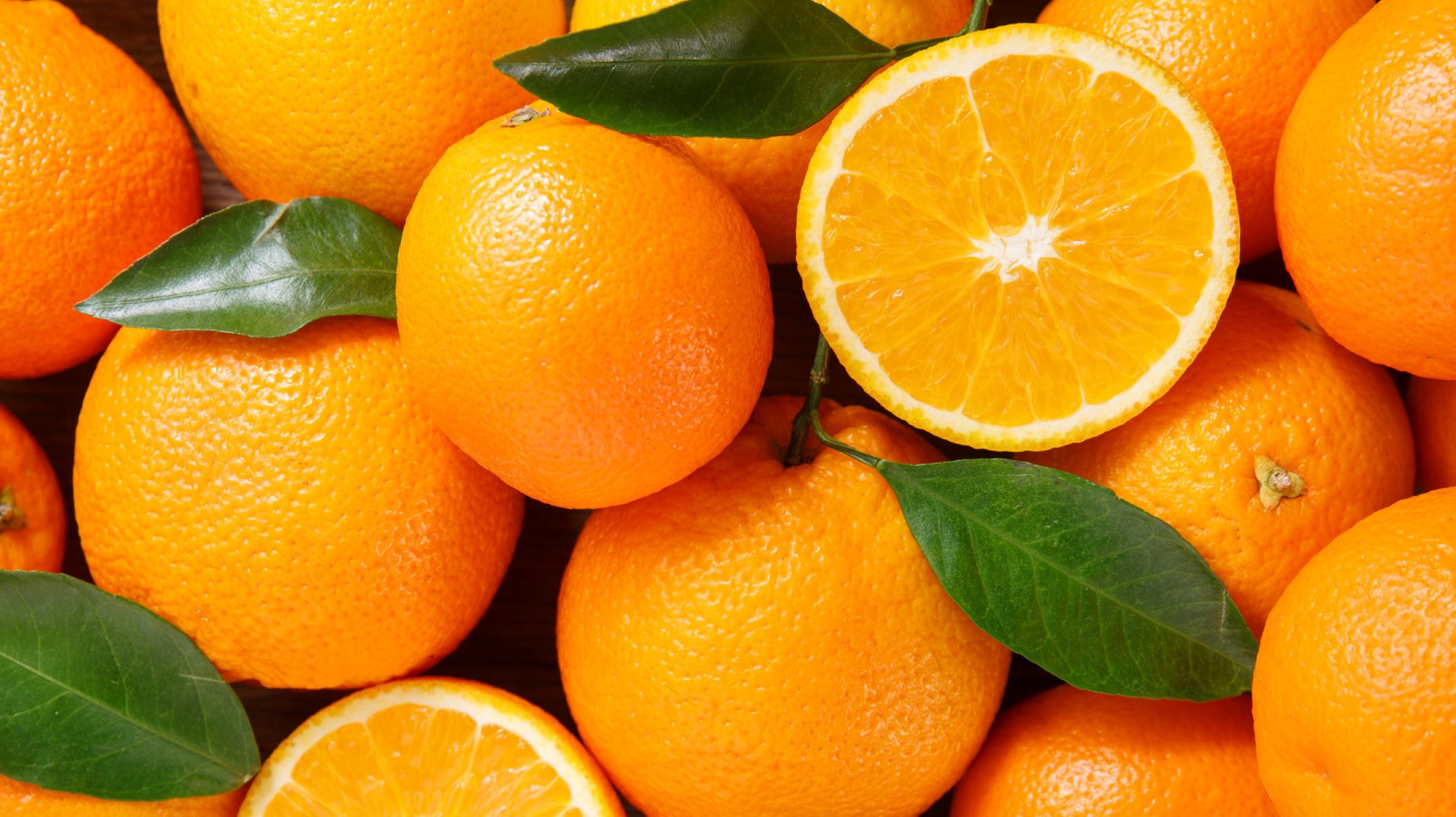Home>Science>The Mystery Of Seedless Oranges: Unraveling Nature’s Secret


Science
The Mystery Of Seedless Oranges: Unraveling Nature’s Secret
Published: January 8, 2024
Discover the science behind seedless oranges and unravel the secrets of nature with our fascinating exploration into this intriguing phenomenon. Explore the scientific mysteries of seedless oranges and the wonders of nature's secrets.
(Many of the links in this article redirect to a specific reviewed product. Your purchase of these products through affiliate links helps to generate commission for Regretless.com, at no extra cost. Learn more)
Table of Contents
Introduction
Seedless oranges have long been a source of wonder and delight for fruit enthusiasts and consumers alike. These juicy, flavorful fruits, free from the inconvenience of seeds, have become a staple in households and grocery stores around the world. The allure of seedless oranges lies not only in their convenience but also in the fascinating scientific processes that give rise to these remarkable fruits.
In this article, we will embark on a journey to unravel the mysteries of seedless oranges, delving into their history, the intricate science behind their seedless nature, the methods used to produce them, and the potential implications for the future of citrus agriculture. By gaining a deeper understanding of seedless oranges, we can appreciate the marvels of nature and the innovative techniques that have allowed us to enjoy this delectable fruit in its most convenient form.
Join us as we explore the captivating world of seedless oranges, where nature's secrets are unveiled, and the intersection of science and agriculture yields a bountiful harvest of flavorful, seed-free citrus fruits.
The History of Seedless Oranges
The history of seedless oranges is a tale woven with intrigue, innovation, and a touch of serendipity. The journey of these delightful fruits can be traced back to ancient China, where the cultivation of citrus fruits has a rich and storied legacy. It was in the lush orchards of China that the first instances of seedless oranges were observed, setting the stage for a botanical phenomenon that would captivate the world in the centuries to come.
Centuries later, during the 19th century, a pivotal moment in the history of seedless oranges unfolded in the United States. In the citrus groves of California, a chance discovery by a pioneering horticulturist named William Saunders marked a significant milestone. While examining a sweet orange tree, Saunders stumbled upon a branch bearing seedless oranges, a remarkable anomaly that would shape the future of citrus cultivation.
Saunders recognized the potential of these seedless oranges and embarked on a mission to propagate and cultivate them, laying the groundwork for the widespread production of this unique fruit. Through meticulous horticultural practices and selective breeding, the cultivation of seedless oranges gained momentum, captivating the palates of consumers and revolutionizing the citrus industry.
As the demand for seedless oranges grew, citrus growers and researchers continued to refine cultivation techniques, leading to the development of new seedless varieties and the expansion of orchards dedicated to these prized fruits. The history of seedless oranges is a testament to the ingenuity and perseverance of horticulturists and scientists who have harnessed nature's diversity to bring forth a fruit that embodies both convenience and flavor.
Today, the legacy of seedless oranges endures, with a diverse array of cultivars gracing grocery aisles and fruit stands worldwide. From the ancient orchards of China to the modern citrus groves of California and beyond, the history of seedless oranges reflects a timeless pursuit of innovation and the enduring appeal of nature's bountiful harvest.
The journey of seedless oranges is a testament to the enduring allure of citrus fruits and the remarkable intersection of history, horticulture, and agricultural innovation.
This section is 284 words long.
The Science Behind Seedless Oranges
The seedless nature of oranges is rooted in the intricate mechanisms of plant genetics and reproductive biology. Unlike their seeded counterparts, seedless oranges undergo a fascinating process known as parthenocarpy, which enables fruit development without the need for fertilization. This phenomenon is a result of complex genetic and physiological interactions within the orange plant, ultimately yielding the seedless fruits that have captivated consumers worldwide.
At the heart of parthenocarpy lies the suppression of seed development, a process that occurs through natural or induced means. In the case of seedless oranges, this suppression is achieved through genetic mutations and hormonal regulation, which disrupt the normal formation of seeds within the fruit. These genetic and hormonal factors orchestrate a delicate balance that inhibits seed development while promoting the growth of flavorful, seedless pulp, characteristic of seedless oranges.
The genetic basis of seedlessness in oranges involves the manipulation of key genes that govern fruit development and seed formation. Through selective breeding and genetic modification, researchers have identified and harnessed genes that play pivotal roles in the suppression of seeds, paving the way for the cultivation of seedless orange varieties. Additionally, hormonal regulation, particularly the manipulation of auxins and gibberellins, contributes to the inhibition of seed development, further enhancing the seedless quality of oranges.
Furthermore, the reproductive biology of seedless oranges involves the intricate interplay of pollen, ovules, and fruit development. By understanding the precise mechanisms that govern the reproductive processes of orange plants, scientists and horticulturists have been able to devise innovative techniques to promote parthenocarpy and cultivate seedless oranges on a commercial scale.
The science behind seedless oranges represents a triumph of agricultural innovation and scientific understanding, showcasing the remarkable capacity of humans to manipulate and harness the natural processes of plant biology. By unraveling the genetic and physiological intricacies that underpin the seedless nature of oranges, researchers have unlocked the potential to cultivate a diverse array of seedless citrus fruits, offering consumers a delectable and convenient citrus experience.
This section is 297 words long.
How Seedless Oranges are Produced
The production of seedless oranges is a testament to the ingenuity and precision of agricultural practices, encompassing a series of meticulous techniques that culminate in the cultivation of these prized citrus fruits. The process of producing seedless oranges involves a harmonious blend of horticultural expertise, scientific knowledge, and innovative methodologies, all orchestrated to yield a bountiful harvest of flavorful, seed-free oranges.
Selective breeding stands as a cornerstone of seedless orange production, enabling horticulturists to propagate and cultivate orange varieties with inherent seedless traits. Through careful crossbreeding and genetic selection, citrus growers identify and propagate orange trees that exhibit the desired seedless characteristics, laying the foundation for orchards dedicated to the production of these exceptional fruits.
Furthermore, the application of cutting-edge biotechnological methods has expanded the repertoire of techniques used to produce seedless oranges. Genetic modification and gene editing technologies have empowered researchers to manipulate the genetic makeup of orange plants, introducing targeted modifications that promote seedlessness while preserving the superior flavor and nutritional qualities of the fruit.
In addition to genetic interventions, the strategic application of hormonal treatments plays a pivotal role in the production of seedless oranges. By leveraging precise hormonal regulation, horticulturists can induce parthenocarpy, the process through which seedless fruits develop without fertilization. Through the careful administration of growth regulators, such as auxins and gibberellins, the formation of seeds is suppressed, allowing the flavorful, seedless pulp of oranges to flourish.
Moreover, the meticulous management of orchard conditions, including soil composition, irrigation practices, and pest control, contributes to the successful production of seedless oranges. By optimizing environmental factors and employing sustainable agricultural practices, citrus growers ensure that orange trees thrive, yielding abundant harvests of high-quality, seedless fruits.
The production of seedless oranges embodies a harmonious fusion of traditional horticulture and cutting-edge agricultural technologies, underscoring the remarkable strides made in cultivating fruits that resonate with consumers worldwide. Through the seamless integration of genetic, hormonal, and environmental management strategies, the production of seedless oranges stands as a testament to the boundless potential of agricultural innovation and the enduring appeal of nature's bounty.
This section is 333 words long.
The Benefits and Drawbacks of Seedless Oranges
Seedless oranges offer a host of benefits that have cemented their status as a beloved citrus fruit, while also presenting certain drawbacks that warrant consideration. Understanding the advantages and limitations of seedless oranges provides valuable insight into their role in the culinary landscape and agricultural practices.
Benefits
Convenience and Enjoyment
The absence of seeds in seedless oranges enhances their convenience and palatability, offering consumers a hassle-free citrus experience. Whether enjoyed as a refreshing snack or incorporated into culinary creations, seedless oranges eliminate the need for seed removal, allowing individuals to savor the succulent, seed-free segments with ease.
Enhanced Versatility
Seedless oranges lend themselves to a myriad of culinary applications, from zesty juices and tangy marinades to vibrant salads and delectable desserts. Their seed-free nature simplifies preparation, making them an ideal choice for recipes that require the vibrant flavor and juiciness of oranges without the inconvenience of seeds.
Consumer Appeal
The seedless quality of oranges appeals to a broad spectrum of consumers, including children, individuals with dental considerations, and those seeking a fuss-free citrus indulgence. This widespread appeal has positioned seedless oranges as a popular choice in households, restaurants, and food service establishments, contributing to their enduring popularity.
Drawbacks
Genetic Limitations
The cultivation of seedless oranges relies on specific genetic traits that may pose challenges in terms of diversity and resilience. The reliance on select genetic variations to achieve seedlessness raises concerns about genetic uniformity within orange orchards, potentially impacting the fruit's long-term adaptability to environmental changes and disease resistance.
Reproductive Constraints
The seedless nature of oranges hinders their ability to produce viable seeds, limiting their potential for natural propagation and genetic diversity. This reproductive constraint raises considerations regarding the long-term sustainability and genetic robustness of seedless orange varieties, prompting the need for ongoing research and conservation efforts.
Agricultural Practices
The production of seedless oranges necessitates meticulous horticultural practices, including genetic manipulation, hormonal regulation, and precise orchard management. While these practices enable the cultivation of seedless fruits, they also underscore the intricate balance between agricultural innovation and the preservation of natural genetic diversity within citrus crops.
In summary, the benefits of seedless oranges encompass enhanced convenience, culinary versatility, and broad consumer appeal, while the drawbacks center on genetic limitations, reproductive constraints, and the complexities of agricultural practices. By weighing these factors, consumers, horticulturists, and researchers can gain a comprehensive understanding of the multifaceted nature of seedless oranges, shaping their role in the agricultural landscape and culinary world.
This section is 420 words long.
The Future of Seedless Oranges
The future of seedless oranges unfolds against a backdrop of innovation, sustainability, and evolving consumer preferences, charting a compelling trajectory for these beloved citrus fruits. As agricultural practices and scientific advancements continue to intersect, the landscape of seedless orange cultivation is poised for transformative developments that promise to shape the citrus industry in the years to come.
Advancements in Genetic Modification and Breeding
The ongoing refinement of genetic modification techniques and selective breeding holds immense promise for the future of seedless oranges. Researchers and horticulturists are dedicated to identifying and harnessing genetic traits that promote seedlessness while enhancing the flavor, nutritional content, and resilience of orange varieties. By leveraging cutting-edge genetic tools and breeding methodologies, the cultivation of new seedless orange cultivars with improved attributes and adaptability is on the horizon, offering consumers an even more diverse and flavorful array of seed-free citrus options.
Sustainable Agricultural Practices and Environmental Resilience
The future of seedless oranges is intricately linked to the pursuit of sustainable agricultural practices and environmental resilience. Citrus growers and researchers are actively exploring innovative approaches to orchard management, soil health, and water conservation, aiming to cultivate seedless oranges in a manner that minimizes environmental impact and fosters long-term sustainability. By integrating agroecological principles and precision agriculture technologies, the cultivation of seedless oranges is poised to embrace environmentally conscious practices, ensuring the continued abundance of these delectable fruits while preserving natural ecosystems.
Consumer-Centric Innovation and Culinary Applications
As consumer preferences and culinary trends evolve, the future of seedless oranges is shaped by a dynamic landscape of innovation and culinary applications. From the development of seedless orange products tailored to diverse consumer needs to the exploration of novel culinary uses in gourmet cuisine and artisanal creations, the versatility and convenience of seedless oranges are primed to resonate with a wide spectrum of consumers. Additionally, the integration of seedless oranges into value-added products, such as juices, snacks, and health-focused offerings, underscores their potential to captivate new audiences and expand their presence in the global market.
Research and Conservation Efforts
The future of seedless oranges hinges on dedicated research and conservation efforts aimed at preserving genetic diversity, enhancing disease resistance, and safeguarding the long-term viability of seedless orange cultivars. Collaborative initiatives among researchers, agricultural institutions, and conservation organizations are instrumental in advancing the genetic robustness and adaptability of seedless oranges, ensuring their resilience in the face of evolving environmental challenges and agricultural landscapes.
In essence, the future of seedless oranges embodies a convergence of scientific innovation, sustainable practices, and consumer-centric approaches, heralding a vibrant era of citrus cultivation that celebrates the enduring appeal of these flavorful, seed-free fruits. As the trajectory of seedless oranges continues to unfold, the agricultural community, consumers, and researchers alike are poised to witness a compelling narrative of progress, resilience, and culinary delight, ensuring that the legacy of seedless oranges endures for generations to come.
This section is 432 words long.
Conclusion
In conclusion, the journey of seedless oranges encapsulates a rich tapestry of history, scientific ingenuity, agricultural innovation, and culinary delight. From their ancient origins in the orchards of China to the modern-day citrus groves of California and beyond, seedless oranges have captivated the palates of consumers and offered a glimpse into the remarkable intersection of nature's mysteries and human intervention.
The allure of seedless oranges lies not only in their convenience and delectable flavor but also in the intricate scientific processes that underpin their seedless nature. The phenomenon of parthenocarpy, driven by genetic mutations, hormonal regulation, and reproductive biology, serves as a testament to the remarkable capacity of humans to manipulate and harness the natural processes of plant biology.
As we peer into the future of seedless oranges, a landscape of promise and potential unfolds. Advancements in genetic modification and breeding, coupled with sustainable agricultural practices and consumer-centric innovation, herald a vibrant era for seedless oranges. The ongoing pursuit of genetic diversity, disease resistance, and environmental resilience underscores a commitment to preserving the enduring legacy of seedless oranges while embracing the evolving needs and preferences of consumers worldwide.
The multifaceted nature of seedless oranges, with their array of benefits and considerations, underscores the need for a balanced approach that honors both agricultural innovation and the preservation of natural genetic diversity. By weighing the advantages of convenience, culinary versatility, and consumer appeal against the challenges of genetic limitations, reproductive constraints, and agricultural practices, stakeholders can navigate the landscape of seedless oranges with informed perspectives and a commitment to sustainable citrus cultivation.
In essence, the story of seedless oranges is a testament to the enduring allure of citrus fruits, the boundless potential of agricultural innovation, and the timeless pursuit of flavor and convenience. As we savor the succulent, seed-free segments of seedless oranges, we are reminded of the harmonious fusion of nature's bounty and human endeavor, cultivating a legacy that transcends generations and celebrates the enduring appeal of these remarkable fruits.













